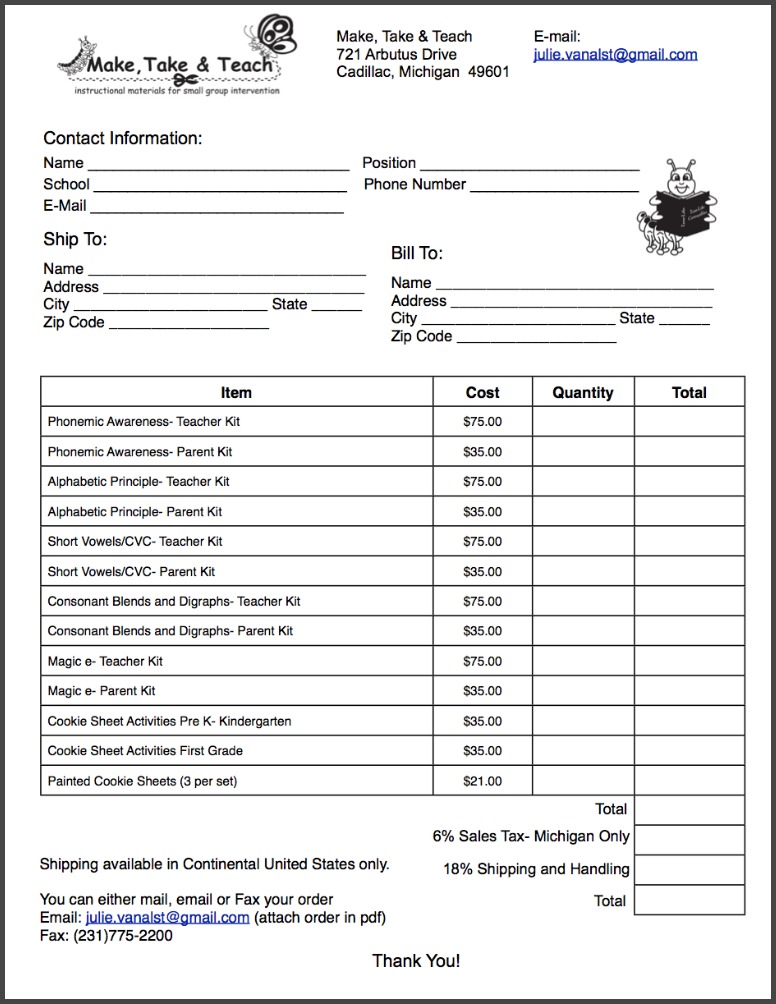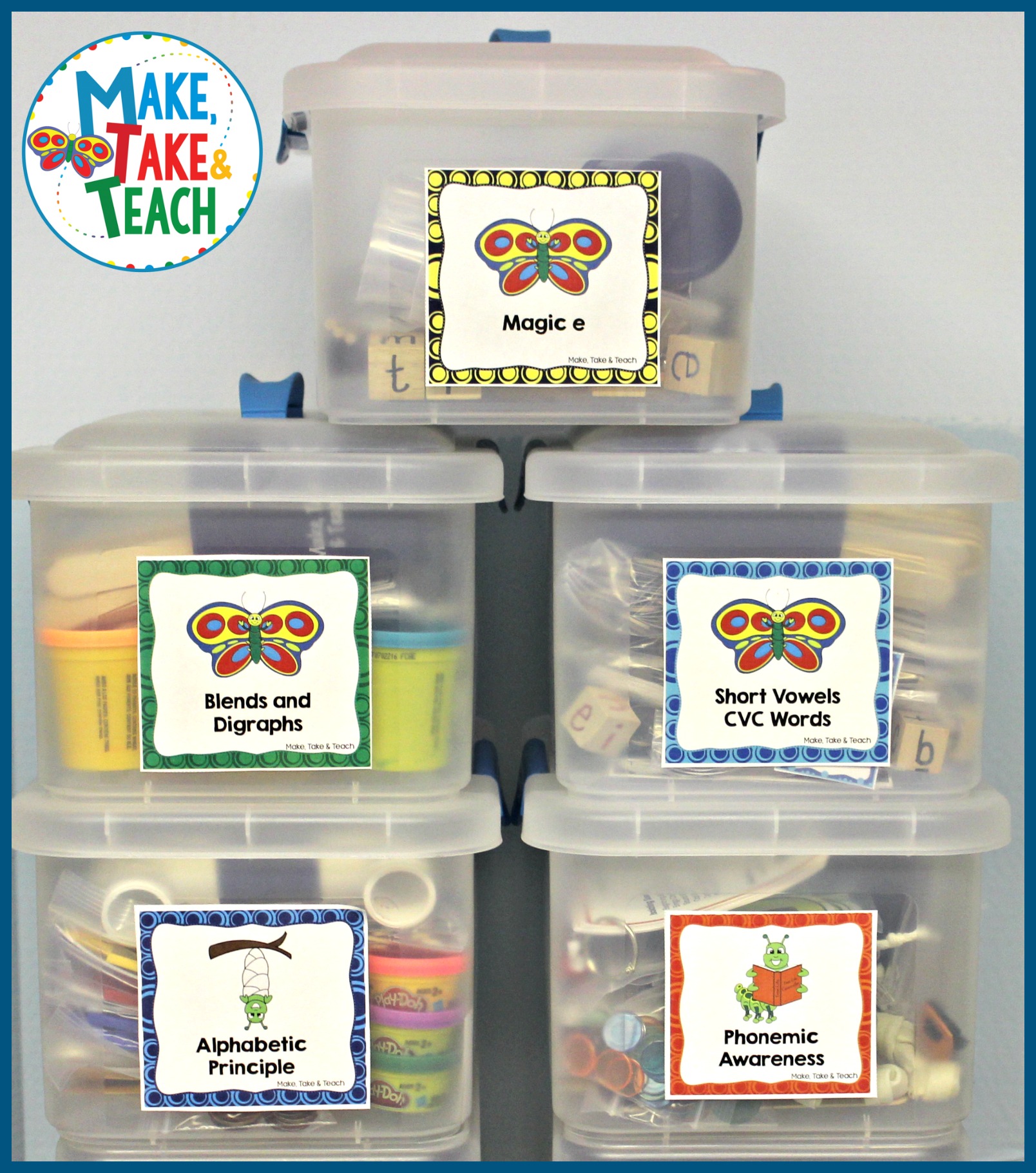Years ago we started using the DIBELS assessment to screen students for reading difficulties and to monitor at-risk students throughout their intervention. We had all this wonderful data, but there seemed to be a gap between the data and then exactly how to use the data to guide instruction and intervention. So, if a child fell within the “intensive” range on the First Sound Fluency or Phoneme Segmentation Fluency assessments, what activities could/should be used to help remediate that particular skill? In order to make the connection between assessment and intervention, the intervention kits were developed.
The intervention kits are intended to be used by either classroom teachers or interventionists to address specific skills during small group instruction. The kits (there are 5 different kits) contain 15-16 hands-on activities for supporting an area of literacy. My favorite kit is the phonemic awareness kit. This kit contains 16 activities for addressing the phonemic awareness skills of isolating sounds, blending, segmenting and phoneme manipulation. All the activities fit into a Sterilite container. When you order the kit you will receive all the materials needed to assemble the activities. This includes the activities printed in color on 90 lb card stock, all the hard goods (e.g. cups, beads, balls, cars, dog bones) and the Sterilite container. You will also receive step-by-step directions for assembling the activities.
The phonemic awareness kit contains a 19 page teaching manual. Step-by-step directions for each activity are provided.
Now for the fun stuff! Here are activities contained within the kit. There are 6 different activities for addressing isolating sounds. Each activity can be easily differentiated to meet the needs of your students and ideas for differentiation are provided in the manual. The students really love the Doggie, Where’s My Bone? activity. For this activity each student has a dog and a mini rawhide bone. You say a word and then a sound within the word (e.g. “cat” /t/) and the student places the bone on the position of the sound (tail for the ending sound). So simple, but they just love using the mini bone!
There are seven activities for addressing the skills of blending and segmenting. The activities are scaffolded in terms of difficulty. For example, the Breaking Up Words activity is the first activity used to introduce the skill of segmentation. As the students become more proficient at the skill, they move through the How Many Sounds?, Squaring Up, Say It-Move, Ball Toss Segmenting and the the Bead Slide. The Race Car Blending activity is certainly a kid-approved favorite for learning the skill of blending.
For students who are moving up through the phonemic awareness progression, three activities are included which address phoneme manipulation. These skills are typically introduced towards the end of first grade. The Memory activity address the skill of initial phoneme deletion, What’s the Scoop?- final phoneme deletion and Doggie Sound Switch- phoneme substitution.
If you teach kindergarten or first grade and you have students who struggle with these critical literacy skills the activities in the kit may prove helpful.
The Phonemic Awareness Intervention Kit is available through the Make, Take & Teach website or through my online Teachers Pay Teachers store.
Of course we take school purchase orders.
Just click the following link to download the order form: Purchase Order Form
There we have it- the 16 activities contained within the kit. Great activities for use during intervention groups!
If you like this kit, you may be interested in our other intervention kits.












Leave a Reply